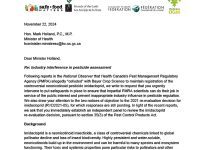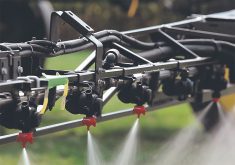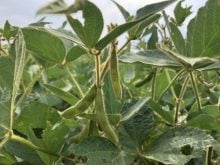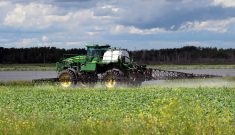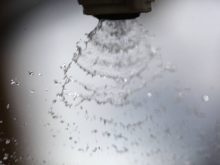Environmental groups, scientists say Bayer influenced the federal agency and its reversal on the safety of imidacloprid
WINNIPEG — Environmental groups and scientists are accusing the Pest Management Regulatory Agency of ignoring data and working too closely with the crop protection industry.
The claims are detailed in a Nov. 22 letter to federal health minister Mark Holland from the David Suzuki Foundation, the Canadian Wildlife Federation and others.
The letter focuses on a 2021 PMRA decision regarding imidacloprid, which is in the neonicotinoid family of insecticides. Neonics, as they are known, are coated onto most of the canola seeds planted in Canada.
In May of 2021 the agency concluded that imidacloprid is not a threat to aquatic insects and “most uses” of the neonic are safe.
Read Also

Huge Black Sea flax crop to provide stiff competition
Russia and Kazakhstan harvested huge flax crops and will be providing stiff competition in China and the EU.
“Health Canada has determined that continued registration of most products containing imidacloprid is acceptable,” the department said.
“Most uses of imidacloprid products meet current standards for protection of human health and the environment.”
The 2021 decision was a reversal of a PMRA stance from 2016.
Back then, the agency claimed the neonic was accumulating in creeks and ponds near agricultural land and posed a threat to aquatic insects, such as midges and mayflies. Therefore, the PMRA concluded, it’s registration should be cancelled.
However, water sampling data collected across the Prairies in 2018 and 2019 showed that levels of imidacloprid and other neonics were actually quite low in ponds and wetlands.
The PMRA used that data to make its 2021 decision, saying imidacloprid was safe.
The letter from the David Suzuki Foundation, other environmental groups and a few scientists says Bayer Crop Science Canada influenced the PMRA and its reversal on the safety of imidacloprid.
That claim is based on a report from Christy Morrissey, Canada’s national observer on neonics and University of Saskatchewan toxicologist.
In 2021, Morrissey criticized the Health Canada decision on imidacloprid. She filed objections to the PMRA, saying the agency ignored independent water sampling data when making its decision on the neonic.
“Higher concentrations of imidacloprid were detected in many of the excluded samples,” says the letter to Holland.
“(The) sampling data of sites not exposed to neonicotinoids may have been selectively and preferentially included in the final assessment — at the request of the registrant (Bayer Crop Science) — to favour continued registration of imidacloprid products.”
In an email to The Western Producer, Bayer Crop Science Canada said this idea has “no merit.”
The PMRA did not exclude water quality data, at the request of the crop protection industry, it added.
“The allegation that Health Canada’s Pest Management Regulatory Agency purportedly “colluded” with Bayer Crop Science to maintain registration of imidacloprid has no merit and is simply not true.”
What really happened, Bayer said, is that Agriculture Canada organized a forum on the PMRA’s proposed ban of imidacloprid in 2016. Farm groups, scientists, non-governmental organizations and crop protection companies participated in the forum and agreed to create an environmental working group.
The PMRA’s initial decision to ban imidacloprid was based on computer models that estimated neonic levels in water near agricultural fields. As a result, the environmental working group organized the collection of actual water samples, from the Prairies and elsewhere, to test the water for the presence of neonics.
“Which led to the generation of robust water monitoring data in 2017-19,” Bayer said.
The David Suzuki Foundation and others that wrote the letter to Holland have been frustrated with PMRA decisions on neonicotinoids for several years.
In March 2021, the agency finalized its special review of two other neonics: clothianidin and thiamethoxam.
The PMRA concluded that the insecticides are not a threat to aquatic insects when used as a seed treatment on canola and in many other instances.
Six environmental groups slammed the agency’s decision on the two neonics.
“We are not convinced that tinkering with label restrictions will be effective in reducing concentrations of neonics in the environment. Certainly, it will be less effective than the originally proposed ban,” said Charlotte Dawe, conservation and policy campaigner with the Wilderness Committee.
The agriculture industry had a different reaction.
The Canadian Canola Growers Association and the Canola Council of Canada praised the PMRA for its review of clothianidin and thiamethoxam.
“We’re pleased that PMRA allowed time to consider all the relevant data to arrive at a decision based on the best science available,” Curtis Rempel, the canola council’s vice-president for crop production and innovation, said in March 2021.
“Our competitiveness as an agriculture sector relies on a regulatory system built on rigorous scientific analysis and evidence-based decision making.”





